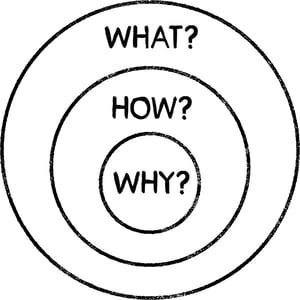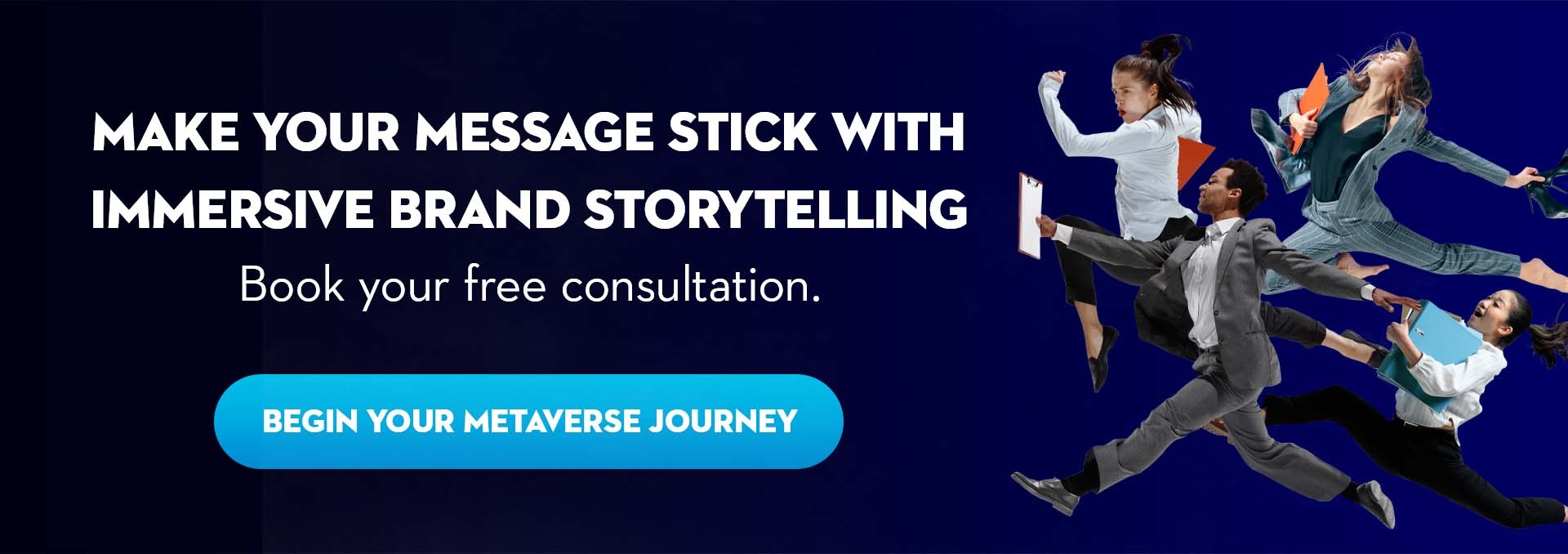Simon Sinek's first TEDx talk from 2009 is the 3rd most-watched TED talk of all time, clocking at well over 46 million views at the moment. If you haven't watched it already, please do so now. The speech is well worth the twenty minutes.
His underlying idea, "People don't buy what you do, they buy why you do it.", is incredibly simple, and also very universal. The Question is now ten years old, but still as valid as ever, and you can apply these three key takeaways also to your next big augmented reality campaign.
Start with why
To explain the "Start with why" -concept, Sinek has developed a metaphor he calls the "Golden Circle." The golden circle consists of three rings. In the middle is "Why?", in the centre is "How?", and in the outer rim is the "What?".
- Why your business exists? The core belief.
- How your business fulfils the core belief?
- What does your company do to fulfil that core belief?

Sounds simple, but still most companies do their marketing backwards. They start with "what" and then move on to the "how", without ever considering asking "why."
Most of the companies don't know why they do what they do
Great leaders (and companies) naturally get the circle right by starting all communication with why they do things, eventually followed by how they do things until finally revealing what it is they actually do.
You can apply the idea to your global business, as well as to your augmented reality campaigns.
1. What is your why?
In the first part, you should define your fundamental "Why" as Simon Sinek intended to. Think about the core purpose of your business, and then think about how you market your products or services. Having loyal customers is all about attracting the right customers who share your core beliefs. Because people don't buy what you do, they buy why you do it.
When someone believes in your "why," they're more than a lead or customer; they're an evangelist, and they are ready to support you.
If you are marketing your business, you want your customers to know why you are in your business in the first place. Understanding and defining this "why" is essential to communicate in the first place.
2. Why are you creating AR?
Are you creating AR for the sole purpose of doing something cool, or do you already have some business objectives in mind? Both of these reasons are equally fine!
You can create AR just for the sake of it, and it's okay, but if you dig deeper, it might be easier than you think to implement more profound meanings and business value to your AR content.
3. Why should your customer care?
People don't buy what you do, they buy why you do it. Think about your customer persona. Do they share your core values, and what is it that drives them to buy your products?
Think about internal motivation and their beliefs that drive their purchase decisions. Make sure your core is clear so your customers can align themselves to support you because they believe in your cause. Create content that inspires them to show their love. Evoke emotions and call them to action.
The how and what -parts
Now that you have a good understanding of Simon Sinek's "Start with Why" -philosophy, it's time to move to the easier parts.
How do you start with augmented reality? If you already know how to start developing your own experiences, go ahead with your preferred tools!
For the rest of you that are more into creating content than technology, It's still easy. Just book a free consultation, and our business developers will guide you along your journey to the best solution.
Then there is the last and most fun part – creating the AR experience itself! Arilyn offers everything you need to begin your augmented adventure. From cost-effective, proven AR concepts to custom AR campaigns made just for you.
Closing words
Whatever your preferred method, the "Why?" part in your augmented reality campaign is still the most crucial one. Everything else after that are quite trivial development and marketing efforts.
Remember: "People don't buy what you do, they buy why you do it." Augmented reality just so happens to be a perfect tool for delivering your core message to your audience.


